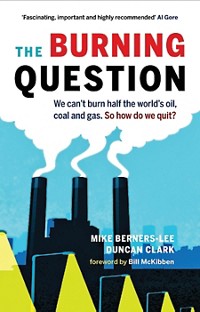Advertisement
Grab your lab coat. Let's get started
Welcome!
Welcome!
Create an account below to get 6 C&EN articles per month, receive newsletters and more - all free.
It seems this is your first time logging in online. Please enter the following information to continue.
As an ACS member you automatically get access to this site. All we need is few more details to create your reading experience.
Not you? Sign in with a different account.
Not you? Sign in with a different account.
ERROR 1
ERROR 1
ERROR 2
ERROR 2
ERROR 2
ERROR 2
ERROR 2
Password and Confirm password must match.
If you have an ACS member number, please enter it here so we can link this account to your membership. (optional)
ERROR 2
ACS values your privacy. By submitting your information, you are gaining access to C&EN and subscribing to our weekly newsletter. We use the information you provide to make your reading experience better, and we will never sell your data to third party members.
Environment
Newscripts
The solution becomes the problem
by Ivan Amato
March 24, 2008
| A version of this story appeared in
Volume 86, Issue 12

Around 1930, when chemist Thomas Midgely Jr. of General Motors was on the road selling the merits of Freon, the chlorofluorocarbon refrigerant he recently had invented, he would draw vapors of the stuff into his lungs in front of audiences and immediately after, with an exhalation, blow out a candle.
The good-chemistry message was unmistakable: Freon won't kill you or set your house on fire the way methyl chloride, sulfur dioxide, isobutene, and other then-conventional refrigerants had been doing. In subsequent years, CFCs became welcome chemical solutions for refrigeration, aerosol can products, and plenty of other things. But this solution became a problem of magnificent proportions. The chemicals' stability, their relentless upward migration into the stratosphere, and decades of industrial-scale production, brought out CFCs' ozonocidal, biosphere-threatening worst.
SOLUTIONS OFTEN BECOME PROBLEMS. Consider what Ian Walker, a Ph.D. "traffic psychologist" at the University of Bath, says he discovered about bicycle helmets in a study published last March in the journal Accident Analysis & Prevention.
Using a video camera and an ultrasonic distance detector, Walker measured the distances at which around 2,300 vehicles overtook him on urban and suburban roads. Half the time, Walker donned a helmet; otherwise he rode helmet free. His data revealed what he calls a "helmet effect," in which drivers tended to pass him an average of 8.5 cm more closely when he wore a helmet than when he did not. During the experiment, the good professor was struck once by a truck and once by a bus. Both times he was wearing a helmet.
"This study suggests wearing a helmet might make a collision more likely in the first place," Walker says. The reason for this, he suggests, is that drivers perceive riders with helmets as "more serious, experienced, and predictable than those without." And that could embolden drivers to leave less room when passing, he surmises.
For the record, it might be worth knowing that Walker, while in Finland with his spouse in 2004, competed in the World Wife Carrying Championship, a 254-meter race through water and across barriers. The couple placed 14th. His wife wore a bicycle helmet; he sported a plastic Viking helmet with huge horns.
Perhaps a more consequential solution-becomes-the-problem dynamic is unfolding in the biofuels mania. What once sounded like an eminently sensible solution to vexing problems like dependence on foreign sources of fossil fuel and the buildup of climate-changing gases in the atmosphere now stands a good chance of being a huge problem-in-the-making.
A growing chorus of analysts have warned, among other things, that an irrationally exuberant push into a biofuel economy could deplete water resources, cause hunger by raising food prices, generate vast new streams of fertilizer runoff, and even belch out more greenhouse gas than the entire biofuel enterprise was supposed to keep locked up in ever-renewing vegetation.
This head-shaking reversal of fortune was succinctly captured by the writer of a Rockefeller University press release that was distributed last summer: The headline proclaimed, "Renewable energy wrecks environment." The release publicized a rock-the-boat, pro-nuclear-power analysis titled "Renewable and Nuclear Heresies" by Jesse H. Ausubel, head of Rockefeller's Program for the Human Environment.
In it, Ausubel calculates the environmental costs—based mostly on land-use statistics—of wind, hydropower, solar, and biomass routes to renewable energy and compares the results with the environmental footprint of nuclear power, especially when it's coupled to the production of hydrogen fuel. "If we want to minimize ... the rape of nature, nuclear energy is the best option," Ausubel concludes.
So, what many have long considered to be a problem of menacing proportions, nuclear power, could become a solution to the problem of renewable energy, which enjoyed a honeymoon phase of being considered a solution to climate change and energy security issues. Of course, if nuclear power does become a solution in the quest for a more sustainable global society, it again will be poised to become a problem.
This week's column was written by Ivan Amato. Please send comments and suggestions to newscripts@acs.org..




Join the conversation
Contact the reporter
Submit a Letter to the Editor for publication
Engage with us on Twitter